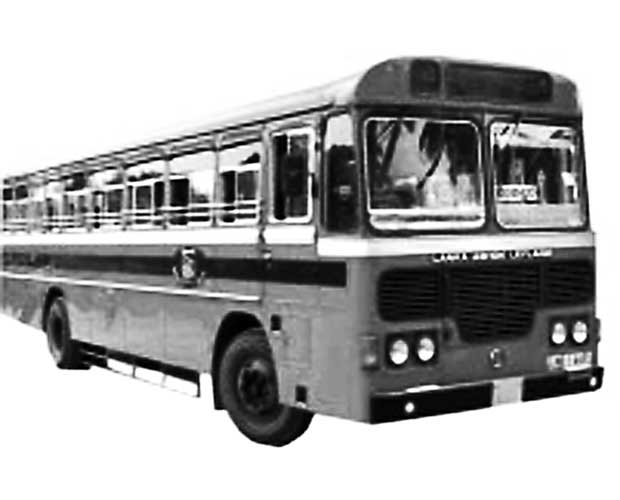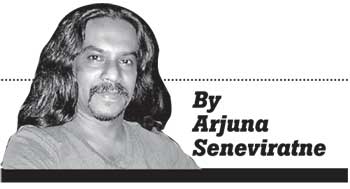Reply To:
Name - Reply Comment
Last Updated : 2024-04-19 21:46:00
As the entire country is aware, the public transport sector has gone from bad to worse over the past decade or so. Currently we have approximately 20,000 private buses and approximately 5,500 SLCTB buses plying on the roads. Anyone who has used these buses knows that they are filled to bursting at rush-hour during which time they race each other to pick as many passengers as they can. At other times they crawl along at snail’s pace hoping to fill the buses through that trick. With very few passengers on the roads at night, the night time public transport is non-existent simply because it is not profitable for operators. To say that the public is severely, impossibly inconvenienced is to put it mildly.

An increasingly desperate public had no choice but to look for alternative means of getting about. Hence, the huge number of motorcycles, auto-rickshaws and small cars that have flowed into the streets, congesting traffic and compounding the overall inconvenience. This trend has seen a 20% drop in public transport use from 60% to 40%. With the sharp increase in the number of vehicles on the road, the average speed of urban centres has dropped to an alarming 12 km/hour. Add to this the fact that those who made the shift did so out of desperation and not because they could afford private transport and we have a national liquidity and home-economics disaster on our hands.
However, when Central Province Transport Board Chairman Eric Weerawardhane had introduced an innovative idea to President Maithripala Sirisena, he perceived that it was in line with his mandate and saw an opportunity to solve the problem once and for all. The idea, in a nutshell, was simple and brilliant – to charge for the public bus transport service based on the number of turns a bus does on a given route instead of the present system where the commuter is charged on an individual basis for each commute.
In that light, the President tasked the Strategic Enterprise Management Agency to inquire into possibilities based on Weerawardhane’s idea and the strategic team at SEMA headed up by its Chairman Asoka Abeygunawardhane, Dr. Don S. Jayaweera and Johann Bandaranayake conducted a 2 ½ month study after which a comprehensive, strong strategy was created.
The process was completed and officially presented to the President as a pilot project on the Kadugannawa-Digana-Kandy route. If successful, it will be introduced first to the Kandy district, next to the Central Province and finally to the entire country. The proposal presentation ceremony and  discussion was held on April 22, 2016 at the Presidential Secretariat with the participation of officials of the National Transport Commission (NTC), SEMA, the Provincial Public Transport Authority and the SLCTB.
discussion was held on April 22, 2016 at the Presidential Secretariat with the participation of officials of the National Transport Commission (NTC), SEMA, the Provincial Public Transport Authority and the SLCTB.
Transport and Civil Aviation Minister Nimal Siripala de Silva, Provincial Minister of Highways Development, Transport, Power and Energy, Housing and Construction Ediriweera Weerawardena, Deputy Transport and Civil Aviation Minister Ashoka Abeysinghe, Central Province Governor Niluka Ekanayaka, SLTB Chairman Ramal Siriwardena and the Secretary to the President P. B. Abeykoon were among those who participated in the discussion of the proposals.
President Sirisena instructed the officials to appoint a committee which consisted of officials of the Ministry of Transport, Sri Lanka Transport Board and the Government Treasury to take future actions on this new system and to have the pilot operational by June 2016.
1.The key to the system: Regardless of the number of passengers carried by each bus, the income of a given operator is determined solely on the total number of turns (km) that it plies on a route on a given day. This essentially means that the commuter does not pay a given bus for using it to go from place to place. Instead, the commuter will purchase a prepaid swipe card that will allow travel a specific distance (km) during a specific month with the option of reloading it at will. This is similar to people using mobile phone top-up services.
2.The bus (State or private) is equipped with a CCTV camera, an electronic swipe-type ticket machine and a GPS. These will monitor the transaction and the route.
3.A communication services provider will manufacture the required reloadable swipe cards and have them as commonly available as phone cards.
4.When a passenger enters a bus, the conductor swipes the card for the distance travelled and that amount is automatically deducted from the card holder and added to the common account of the route operators.
5.At the end of the day, the route operators’ accounts are automatically credited according to the number of turns (total km) that each bus has plied on that particular route.
6.If a commuter doesn’t have a swipe card, no problem. He could still enter the bus anyway and choose one of the two options: a) pay the single fair in cash to the conductor who would then swipe his own special card into the system to record the transaction or, b) purchase a swipe card from the conductor.
The only extra requirements are the CCTV camera, the special swipe machine and the GPS, and these would be provided to the operators with a three-month grace period for payback where a percentage of their revenue would be deducted over that period to pay for the equipment.
1.This would be a zero budget initiative and would simply result in a more even distribution of the total buses available and the SEMA study clearly showed that the present fleet is quite sufficient if it is spread out over the day.
2.No internal competition between operators there would be no racing and no slowing down to grab more passengers resulting in a reduction of congestion on the roads.
3. Night-time public transport would once again be certain since operators would like to increase the number of turns they do.
4.With increased regularity and significantly reduced numbers of commuters per bus, there would be a large percentage of them returning to use public transport, resulting in a reduction of overall vehicular traffic on the roads which in turn would reduce overall vehicular congestion.
5The system makes it possible to give all sorts of concessions to regular commuters including the aged and disabled.
Udara Kothalwala Tuesday, 03 May 2016 10:57 AM
Good one!!
Nethra Tuesday, 03 May 2016 03:38 PM
We done,disciplined commuters and in the long runcorruption will do away from our Country.
Bimal Thursday, 05 May 2016 04:31 PM
Great initiative. But what will prevent bus drivers from racing along the route to rack up as many legs/kms per day in this senario?

Add comment
Comments will be edited (grammar, spelling and slang) and authorized at the discretion of Daily Mirror online. The website also has the right not to publish selected comments.
Reply To:
Name - Reply Comment
On March 26, a couple arriving from Thailand was arrested with 88 live animal
According to villagers from Naula-Moragolla out of 105 families 80 can afford
Is the situation in Sri Lanka so grim that locals harbour hope that they coul
A recent post on social media revealed that three purple-faced langurs near t